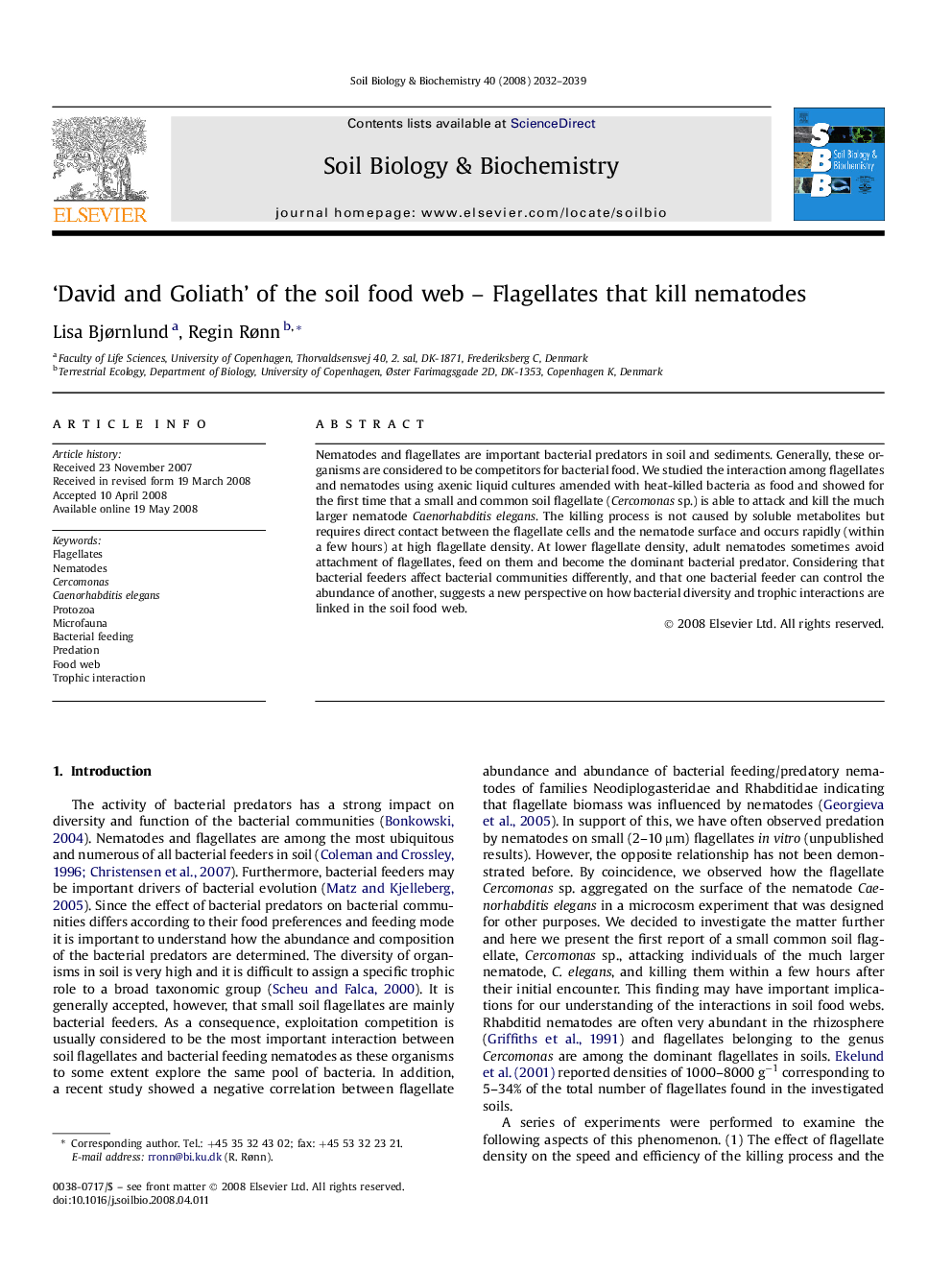| Article ID | Journal | Published Year | Pages | File Type |
|---|---|---|---|---|
| 2026924 | Soil Biology and Biochemistry | 2008 | 8 Pages |
Abstract
Nematodes and flagellates are important bacterial predators in soil and sediments. Generally, these organisms are considered to be competitors for bacterial food. We studied the interaction among flagellates and nematodes using axenic liquid cultures amended with heat-killed bacteria as food and showed for the first time that a small and common soil flagellate (Cercomonas sp.) is able to attack and kill the much larger nematode Caenorhabditis elegans. The killing process is not caused by soluble metabolites but requires direct contact between the flagellate cells and the nematode surface and occurs rapidly (within a few hours) at high flagellate density. At lower flagellate density, adult nematodes sometimes avoid attachment of flagellates, feed on them and become the dominant bacterial predator. Considering that bacterial feeders affect bacterial communities differently, and that one bacterial feeder can control the abundance of another, suggests a new perspective on how bacterial diversity and trophic interactions are linked in the soil food web.
Keywords
Related Topics
Life Sciences
Agricultural and Biological Sciences
Soil Science
Authors
Lisa Bjørnlund, Regin Rønn,
